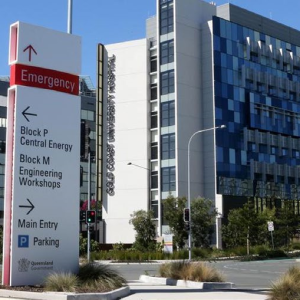Queensland eMR rollout gets mixed report card

Eight years into a state-wide rollout of an electronic Medical Record (eMR), a comprehensive assessment of Queensland Health’s digital maturity has found that it suffers from a lack of data integration and also that disconnected systems and devices are interrupting workflow and increasing time for staff to complete tasks. It also found a lack of digitisation and reliance on manual data collection and extraction.
Professor Keith McNeil, Chief Clinical Information Officer, Queensland Health, believes, “The assessment … shone a spotlight on the opportunity to update and modernise data strategy and infrastructure.”
Queensland Health is comprised of 16 local Hospital and Health Services (HHSs) managing a total of 119 public hospitals. Queensland Health employs more than 97,000 staff serving a population of more than 5 million, and has an annual operating budget of approximately $22 billion.
The Cerner integrated EMR (ieMR) being rolled out in Queensland is presently used by nine out of 16 HHSs. The ieMR facilitates the patient journey across various healthcare sites, and includes an EMR, computerised provider order entry, ePrescribing and clinical decision support systems.
Queensland Health’s digital maturity was assessed by the Healthcare Information and Management Systems Society’s (HIMSS) Digital Health Indicator (DHI), customised research, and a gap analysis to design the future roadmap for digital transformation.
The DHI measures four dimensions of digital health transformation: Interoperability, Person-Enabled Health, Predictive Analytics, Governance and Workforce. Scores in each dimension combine for a possible total of 400.
Queensland Health scored 143/400 for the DHI, although it was pointed out that this puts it above the Oceania average of 135/400, and below the average scores for health systems in Asia-Pacific and North America at 153/400 and 246/400 respectively.
Some issues highlighted in the report included:
• Lack of data integration between systems and ieMR.
• Incomplete implementation (e.g., missing modules, no HHS-wide coverage of digital health, etc.)
• shortcomings with analytics dashboards, such as manual input of data being required and none that are outcomes focused.
• Difficulties in data sharing and communication between clinicians, HHS and external providers.
• Patient interaction with clinician and HHS (especially outside HHS) is not digitally enabled.
• Lack of a digital health/data strategy.
• Funding and resource constraints.
• Underutilisation of virtual care services; especially remote monitoring tools and in home telehealth.
• Population health analytics is not conducted.
• Patient reported outcomes are underutilised.
• Incomplete data collected (e.g., missing full patient journey).
“During the assessment, it was found that several barriers highlighted above were in the midst of being addressed; it is expected that Queensland Health’s digital maturity level will grow as it addresses these barriers.” the report notes.
The full report is available HERE
